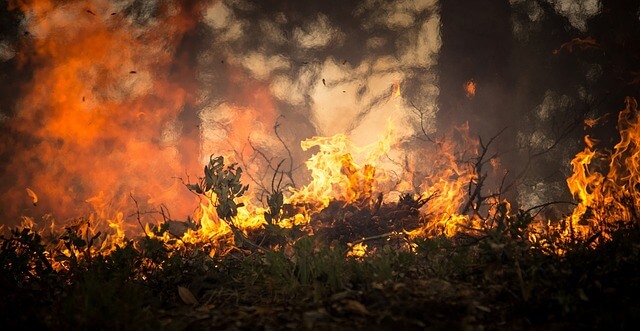Despite the large amounts of snowfall over the Centennial State this past winter, Coloradoans are already being racked with wildlife danger just a handful of weeks into the spring.
The majority of Colorado benefitted from the large snow dumps around November to early winter, but a dry March has left a chunk of the Centennial state low on moisture, and susceptible to wildfire danger. Unfortunately, it doesn’t look like sizable relief will be hitting the state anytime soon.
The National Oceanic Atmospheric Administration’s Climate Prediction Center calls for warmer-than-average across the bulk of the country in the coming spring months and that Coloradans can look forward to a 50 to 60% chance that the next few months will be unseasonably warm. This added heat will help increase the chance of devastating wildfires. Currently, the eastern portion of Colorado is classified as “abnormally dry,” by the U.S. Drought Monitor.
2017 has already seen a few wildfires very early into the season. One wildfire made it close enough to put downtown Boulder on alert and two wildfires have started in Jefferson County in the past 7 days. Earlier in March a 30,000 acre wildfire spread over the northeastern plains portion of the state, taking homes and livestock along with it.
The dryer than average conditions have seen multiple jurisdictions around the Denver metro enact burn bans to mitigate the chances of locally started wildfires. The wildfire in Boulder is believed to have been started by a group of transient campers.
The Colorado Division of Fire Prevention and Control will release its report on the fire outlook for 2017 on April 14. The report has already been discussed in committee with U.S Forest Service, the Federal Bureau of Land Management, and Gov. John Hickenlooper.
Luckily it isn’t all bad news. Colorado’s Western Slope is currently free of any drought designations and is sitting pretty at 100% or above normal snowpack levels. The hope is that the strong snowpack will be able to keep up with the state’s moisture needs but some are worried that the drought conditions could give Colorado worse wildfires than the damaging seasons of 2012 and 2013.
Forecasters looking at the models for the next few days are excited by the moisture they seen, but how the wildfire season plays out will only be known in time.





